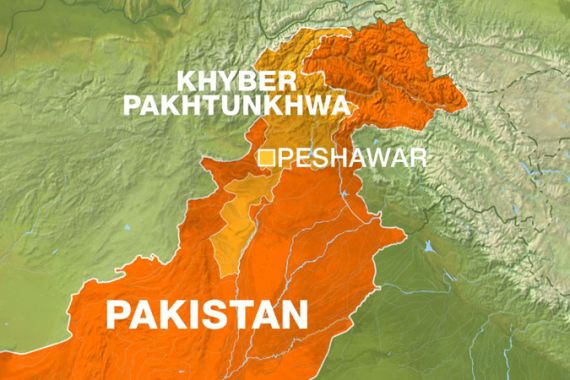It is a bitter reality that the supreme power in the Kingdom of Godfather Pakistan is monopolized solely by the military establishment, which has subjugated all state institutions. Among its victims, the media stands atop the list.
Although Pakistan is officially hailed as a federation, where all its constituent units enjoy equal rights and powers, this equality remains confined to mere words. In practice, it is far from the truth.
Whenever Punjab faces challenging times or crises, little attention has been paid to the other provinces. Punjab not only holds the majority population in Pakistan but also dominates the ranks and positions within the Pakistan Army.
This demographic reality has led to the military establishment prioritizing the interests and rights of Punjabis. This thought has been on my mind since April 2022 when the relations between former Prime Minister Imran Khan and the military establishment turned sour.
Since then, security incidents in Khyber Pakhtunkhwa (KP) have either been completely ignored or treated with secondary importance. The ongoing power struggle between Imran Khan and the military establishment has entered a decisive phase, resulting in the dismissal of his loyalists for making trivial statements in press conferences. Ironically, during this period of time, loyalists of the Pakistan-backed Taliban in Afghanistan have made their presence felt, resulting in increased terrorism and violence in the northern districts of Khyber Pakhtunkhwa.
How did the militants of Pakistan’s extremist organization, Tehreek-e-Taliban Pakistan, manage to return from Afghanistan? Pakistani General Retired Faiz Hameed and his close associate Barrister Muhammad Ali Saif might shed light on this matter. Nevertheless, the powerful circles responsible for this will have to be held accountable, either now or in the near future.
Continued attacks in KP
Unfortunately, major acts of terrorism have occurred throughout Khyber Pakhtunkhwa. These include a suicide blast in Peshawar’s Police Lines Jama Masjid during Zuhr prayers, attacks on anti-terror police stations in Bannu and Swat, and terrorist incidents in Dera Ismail Khan and Hangu, targeting a foreign company’s plant. In areas such as Lucky Marwat, North and South Waziristan, and others, hundreds of people, including police officers and polio workers, have fallen victim to ambushes and bombings.
Recently, Teri Mangal, a highly sensitive area near the Afghanistan border in Kurram district, witnessed a horrific incident of terror and bloodshed. Eight individuals, including five teachers, were brutally murdered. While locals classify it as a purely terrorist incident, some quarters attribute it to a property or land dispute. However, leaders from Shia and Sunni schools of thought in Kurram district are united in their demand for an impartial investigation into these incidents.
Major terrorism incidents went unnoticed in KP
It is disconcerting to note that since 2004 neither judicial inquiries nor reports from any other institution have shed light on the major terrorism incidents in Khyber Pakhtunkhwa and across the country. Despite protests in Kurram district and Peshawar regarding the incident in Teri Mangal, there is a lack of awareness among those who hold real power, as well as the media, who seem focused on perpetuating political crises.
Among the victims of this tragedy were highly educated teachers. Ironically, while those responsible for upholding the law follow the orders of powerful circles, political parties and leaders remain preoccupied with their future prospects. Regrettably, the province finds itself burdened with a governor, Ghulam Ali, who has turned the governor’s house into a center for personal gain. Similarly, despite being in the position of caretaker Chief Minister, Azam Khan has failed to ensure the protection of lives and property.
Ousted primer Khan is also from KP
Cricketer-turned politician Imran Khan is originally from KP and the general view is that since he is not a Punjab politician, he is more under attack
Now the army accused Khan’s supporters of damaging military properties and attempting to forcibly enter the Army’s General Headquarters (GHQ) in protest against Khan’s arrest.
Indeed, torching military buildings or attacking GHQ is not a common practice in Pakistan as people are afraid of the army. The army has been the protagonist in power politics for decades but after the arrest of dozens of Khan’s supporters and consideration to dissolve Pakistan Tehreek-e-Insaf (PTI) party, once again the army showed its power. The May 9 chaos in return gives the army more power against Khan, with the majority of the PTI’s leaders either leaving the party or politics. There would soon be a scene where Khan would be proverbially seen alone, like a leader without followers.
Khan had repeatedly said that he was unaware of May 9 events, and he is right because he was in jail during the chaos and was not even allowed to carry cellophane. He was behind bars almost disarmed. After his release, Khan said his party was not involved in creating chaos, but the army is using the old tactic by showing the scenes of people barging into a lieutenant general’s house in Lahore and the Army’s GHQ, to further isolate Khan and eventually force him to quit the party or leave the country. If Khan persists, the army will not leave any stone unturned to put him behind bars for some years.
Everyone knows who Zulfiqar Ali Bhutto was – he was the founder of Pakistan People’s Party (PPP) and was a populist like Khan and had the ability to enthrall the people. But of course, when Bhutto was put in jail and sentenced to death, his party workers and supporters did not attack military establishment.


 OPINION6 days ago
OPINION6 days ago
 DIPLOMACY5 days ago
DIPLOMACY5 days ago
 ASIA4 days ago
ASIA4 days ago
 AMERICA2 weeks ago
AMERICA2 weeks ago
 RUSSIA2 weeks ago
RUSSIA2 weeks ago
 MIDDLE EAST1 week ago
MIDDLE EAST1 week ago
 AMERICA2 weeks ago
AMERICA2 weeks ago
 ASIA2 weeks ago
ASIA2 weeks ago




















